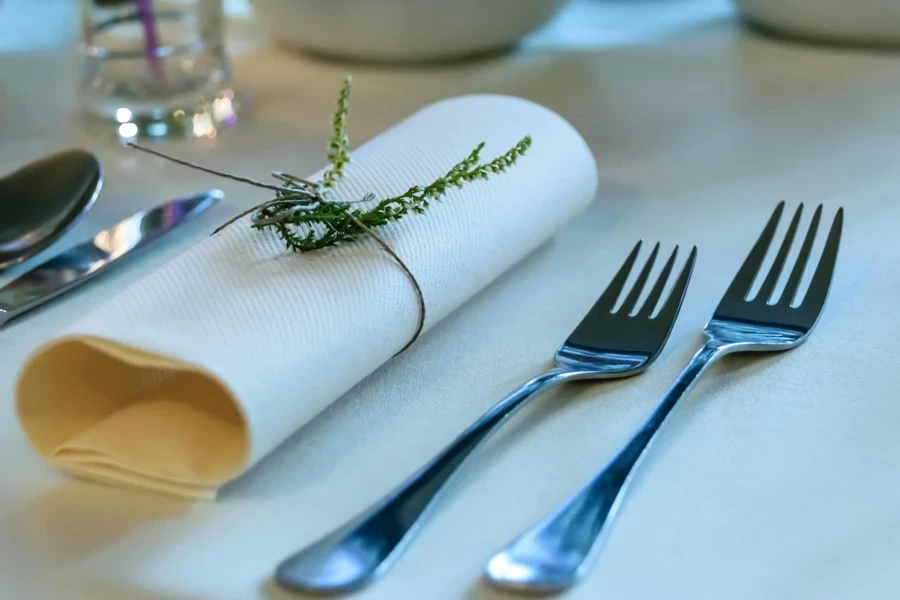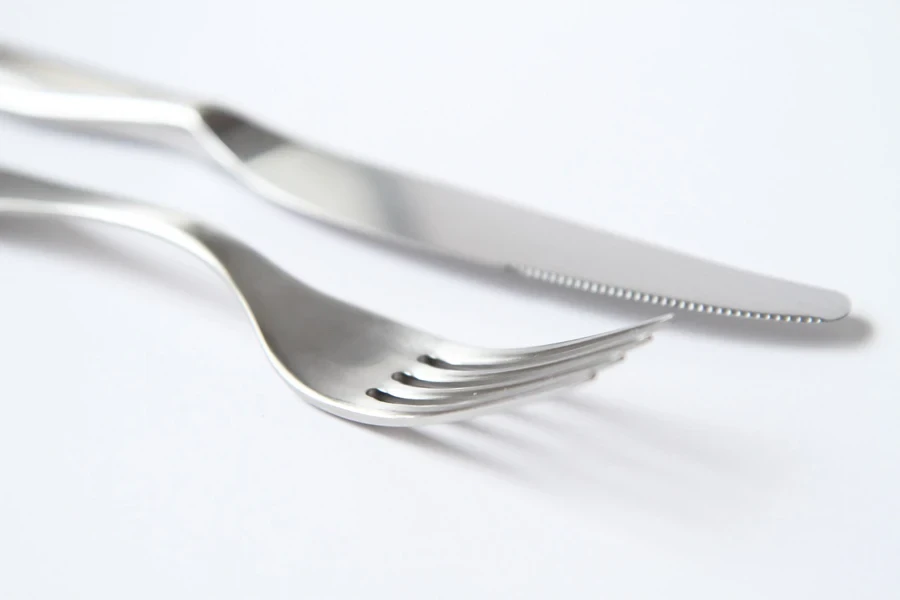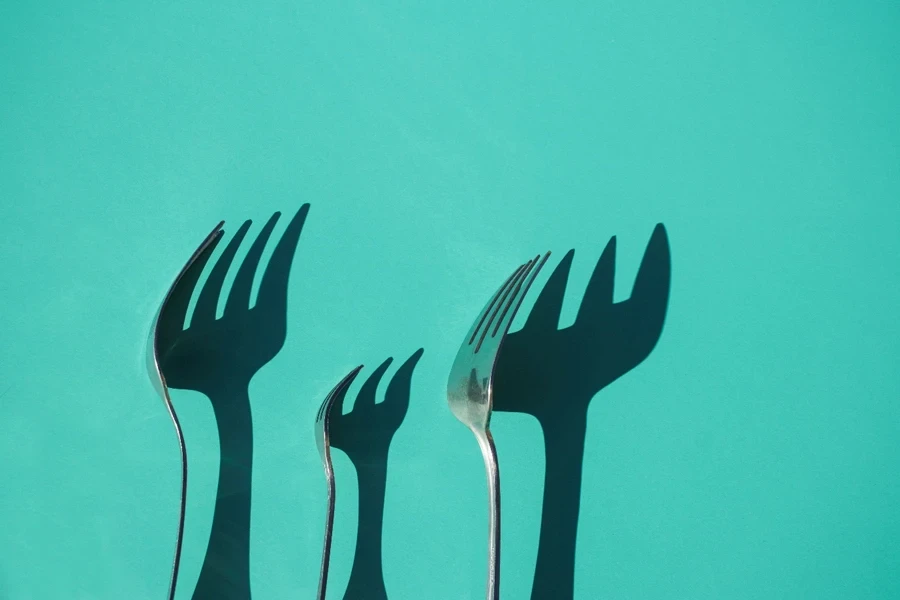Forks play a crucial role in dining, reflecting both function and elegance in table settings, especially in commercial spaces where quality and presentation matter. As the market for tableware forks evolves, factors like sustainability, premium materials, and ergonomic designs are driving purchasing decisions. For professional buyers, staying informed about these trends and understanding the types of forks available is essential to meet customer expectations and enhance the dining experience. This article delves into the current market landscape, explores key fork types, and highlights important considerations for selecting the best products. Such insights can support strategic buying choices that align with quality, style, and environmental responsibility.
Table of Contents
● Understanding the forks market landscape
● Exploring fork types and unique features
● Key considerations when choosing forks
● Conclusion
Understanding the forks market landscape

Growth and projections
The global market for tableware forks is experiencing a significant growth trajectory, with a valuation of approximately $100 million in 2023 and expected to reach $200 million by 2030. This reflects a CAGR of 7.19%, driven by increased consumer spending in the home and commercial dining sectors, according to Verified Market Reports. Consumer awareness of eco-friendly dining tools is propelling demand for forks crafted from sustainable materials, such as bamboo and recycled metals, which now play a central role in market expansion.
Current market trends
Today’s consumers prefer forks that align with sustainable practices and aesthetic dining experiences. Premium materials like stainless steel, silver, and artisanal metals are in demand, as they not only enhance durability but also add a level of sophistication to table settings. Additionally, forks designed with ergonomic features and specialty shapes cater to both functionality and style, appealing to consumers seeking to elevate the dining experience. According to Christofle, this trend is especially evident in the market for high-quality cutlery tailored for upscale dining occasions and events.
Key players and competition
Leading brands such as Oneida Group, WMF, and Eco-Products are at the forefront of the tableware fork market. These companies leverage product innovation, sustainability, and ergonomic designs to differentiate their offerings. Competitive strategies often include technological advancements in manufacturing and the introduction of exclusive design elements, aimed at attracting a discerning clientele. As stated by Verified Market Reports, the industry sees active engagement from top players through strategic partnerships and eco-friendly initiatives, creating a dynamic and competitive marketplace.
Exploring fork types and unique features

Dining fork varieties
In formal dining, dinner forks generally measure 7.5 to 8 inches in length, with standard four-tine designs crafted to balance well in hand and provide firm support for cutting and piercing foods like steak, pasta, and roasted vegetables. Salad forks are typically around 6 inches with slightly wider, sometimes curved tines, which aid in cutting softer foods and ensuring leafy vegetables aren’t damaged. Dessert forks, usually around 5-6 inches, feature slim, delicately spaced tines designed for precision in handling desserts. In upscale environments, dinner and salad forks may incorporate weighted handles with a centered balance point, enhancing the dining experience by minimizing wrist strain during extended use.
Specialty forks
Specialty forks offer precision for specific dining purposes. Oyster forks, designed with shortened, curved tines, allow easy access to shellfish without slipping. Fish forks feature three tines with a wider outer tine that is gently curved to slide under delicate fish flesh, often incorporating a slightly serrated edge to separate meat from bones with minimal effort. Carving forks, around 10 inches long, are built with extended, sharpened tines that maintain grip on roasted meats and large cuts, minimizing movement during slicing. These forks often feature handles made from heat-resistant composite materials or insulated metals, ensuring durability and safe handling near heat.
Material impact on quality and experience

Materials profoundly impact fork quality, especially in high-use or aesthetic settings. Stainless steel forks, typically 18/10 or 18/8 alloy (chromium/nickel ratio), are resistant to rust and staining, with the higher nickel content enhancing shine and corrosion resistance, making them ideal for commercial use. Silver-plated forks, often plated over a core of nickel silver or copper, offer a sophisticated look, though they require regular polishing and careful handling due to susceptibility to tarnish. Bamboo and recycled metal forks are gaining popularity for sustainability; bamboo is lightweight yet durable, with moisture-resistant coatings added to improve longevity in humid conditions, while recycled metals are often alloyed to match the durability of traditional stainless steel.
Innovative fork designs
Ergonomic fork designs include contoured handles that fit naturally in the hand, reducing muscle strain, often achieved with weight distribution adjustments and slight indentations in the handle to improve grip. Premium forks may feature hand-finished textures or unique patinas that add visual appeal and reduce surface glare under lighting. For high-tech dining, smart forks integrate micro-sensors that monitor bite speed and food intake, transmitting data via Bluetooth to smartphone apps. These sensors are embedded in the handle and designed to be waterproof and shock-resistant, enabling easy cleaning while maintaining functionality for health-conscious diners.
Key considerations when choosing forks

Assessing quality and durability
When evaluating forks, quality and durability hinge on factors like material composition, balance, and craftsmanship. Stainless steel forks made from 18/10 or 18/8 alloys (containing 18% chromium and 10% or 8% nickel) provide superior corrosion resistance and shine, ideal for high-use environments. Balance is crucial; forks with a centered weight distribution reduce hand strain and improve handling, a significant advantage in commercial dining where utensils are frequently used. Look for forks with smooth, well-finished edges and uniform tine alignment—characteristics of high craftsmanship that prevent uneven wear over time. Quality control measures, such as inspection for scratch resistance and joint strength between handle and tines, also contribute to long-lasting performance.
Sustainability factors
Sustainability is increasingly important, especially in B2B purchasing. For eco-conscious buyers, forks made from recycled metals or renewable materials like bamboo offer a reduced environmental footprint. Bamboo is both renewable and biodegradable, often treated with water-resistant coatings to enhance durability. For metal forks, certifications indicating the use of recycled content and environmentally safe production methods add value. Brands offering Forest Stewardship Council (FSC) or Cradle to Cradle certifications demonstrate adherence to sustainable practices. Additionally, choosing products from brands with transparent supply chains or environmental initiatives supports responsible sourcing and production, aligning with corporate sustainability goals.
Aesthetic and brand value
Selecting forks that match dining aesthetics can enhance brand perception, especially in luxury or themed dining environments. Premium brands offer options like custom engravings or unique finishes, such as brushed or polished silver, that cater to upscale tastes. High-end forks with distinctive design elements or finishes can reinforce brand identity in high-profile events and establishments. Matching fork designs with existing tableware—whether modern, vintage, or minimalist—can create a cohesive table setting, enhancing the overall dining experience. Additionally, premium brands often use proprietary alloys or specialized finishing techniques to achieve a unique appearance and feel, setting them apart in the market.
Ergonomics and functionality
Ergonomic features are critical, especially for establishments where forks are handled frequently and for extended periods. Forks with contoured handles and balanced weight distribution reduce user fatigue, a key factor in commercial settings. Some designs incorporate textured grips or subtle indentations along the handle, providing stability and comfort for a range of hand sizes. In terms of functionality, specialized forks with added durability—such as reinforced tines or shock-resistant coatings—are preferable in high-traffic venues. Ergonomic features not only improve user experience but can also reduce replacement rates due to wear, supporting long-term value and customer satisfaction.
Conclusion

Choosing the right forks involves balancing quality, aesthetics, and sustainability to elevate the dining experience. High-quality materials and well-crafted designs ensure durability, while eco-friendly options support responsible sourcing. By aligning selections with both practical needs and stylistic themes, buyers can provide refined, thoughtful dining setups that cater to modern consumer expectations and align with brand values in sustainability and elegance.




